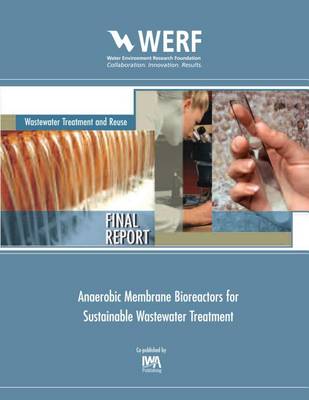WERF Research Report
1 total work
Anaerobic Membrane Bioreactors for Sustainable Wastewater Treatment
by Lutgarde M. Raskin
Published 29 June 2012
Available as eBook only.
Sustainable water management is increasingly important for utilities and is driving efforts to reduce energy consumption and residuals production in domestic wastewater (DWW) treatment without compromising effluent quality. Anaerobic membrane bioreactors (AnMBRs) combine anaerobic biological treatment and membrane separation in a single process. The potential benefits of DWW treatment by AnMBRs are substantial: (1) they generate a fraction of the residuals and consume substantially less energy compared to conventional DWW treatment systems; (2) they allow for the recovery of methane, a renewable energy source, which further improves the energy balance; and (3) they can be integrated in centralized or decentralized wastewater treatment schemes due to easy scalability. In short, DWW treatment using AnMBR technology potentially represents a more sustainable DWW treatment paradigm.
This study was pursued to address the following questions that highlight the challenges associated with DWW treatment with AnMBR: Can AnMBR be operated at low DWW temperatures that are experienced in many regions in the U.S. and around the world?
Sustainable water management is increasingly important for utilities and is driving efforts to reduce energy consumption and residuals production in domestic wastewater (DWW) treatment without compromising effluent quality. Anaerobic membrane bioreactors (AnMBRs) combine anaerobic biological treatment and membrane separation in a single process. The potential benefits of DWW treatment by AnMBRs are substantial: (1) they generate a fraction of the residuals and consume substantially less energy compared to conventional DWW treatment systems; (2) they allow for the recovery of methane, a renewable energy source, which further improves the energy balance; and (3) they can be integrated in centralized or decentralized wastewater treatment schemes due to easy scalability. In short, DWW treatment using AnMBR technology potentially represents a more sustainable DWW treatment paradigm.
This study was pursued to address the following questions that highlight the challenges associated with DWW treatment with AnMBR: Can AnMBR be operated at low DWW temperatures that are experienced in many regions in the U.S. and around the world?
